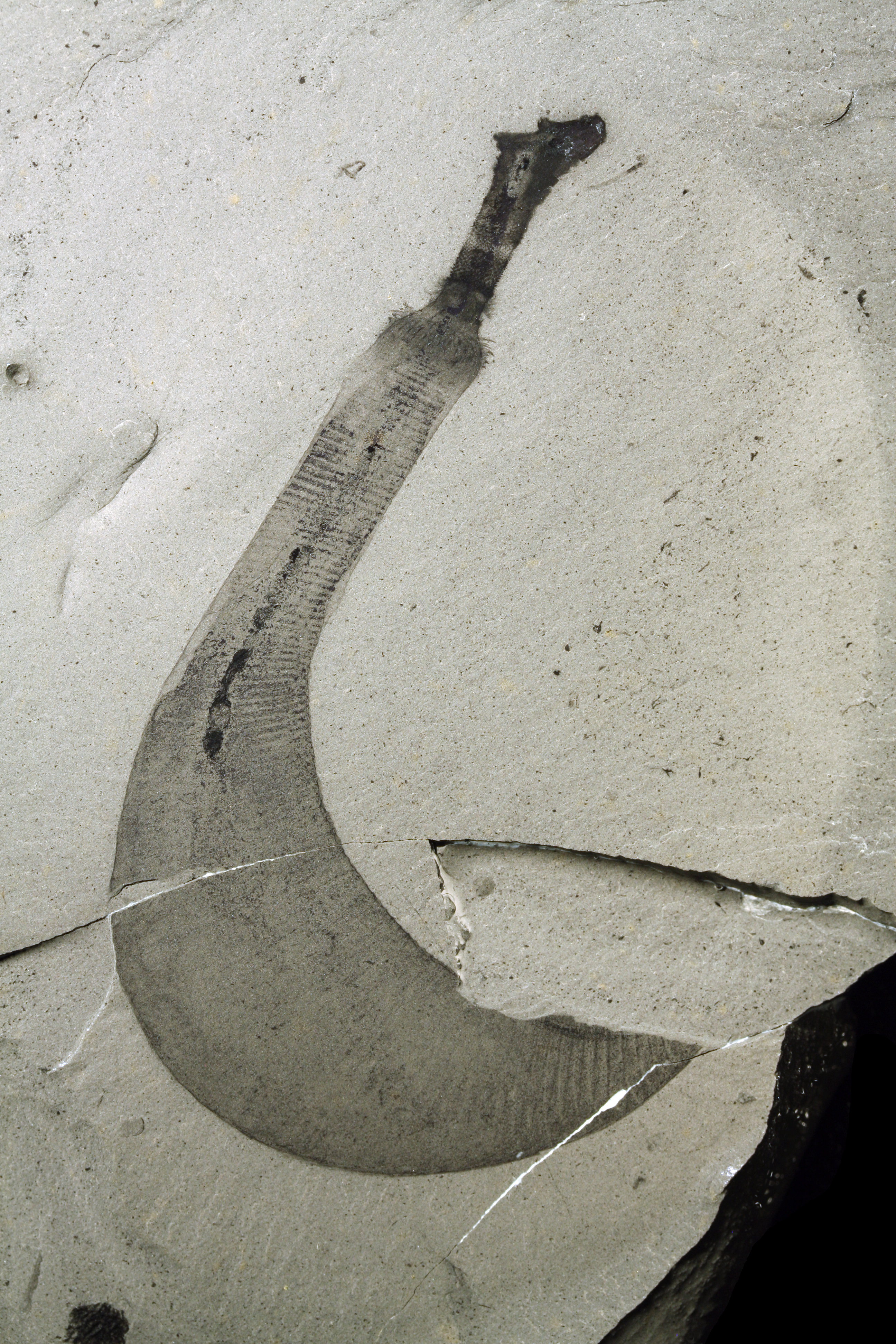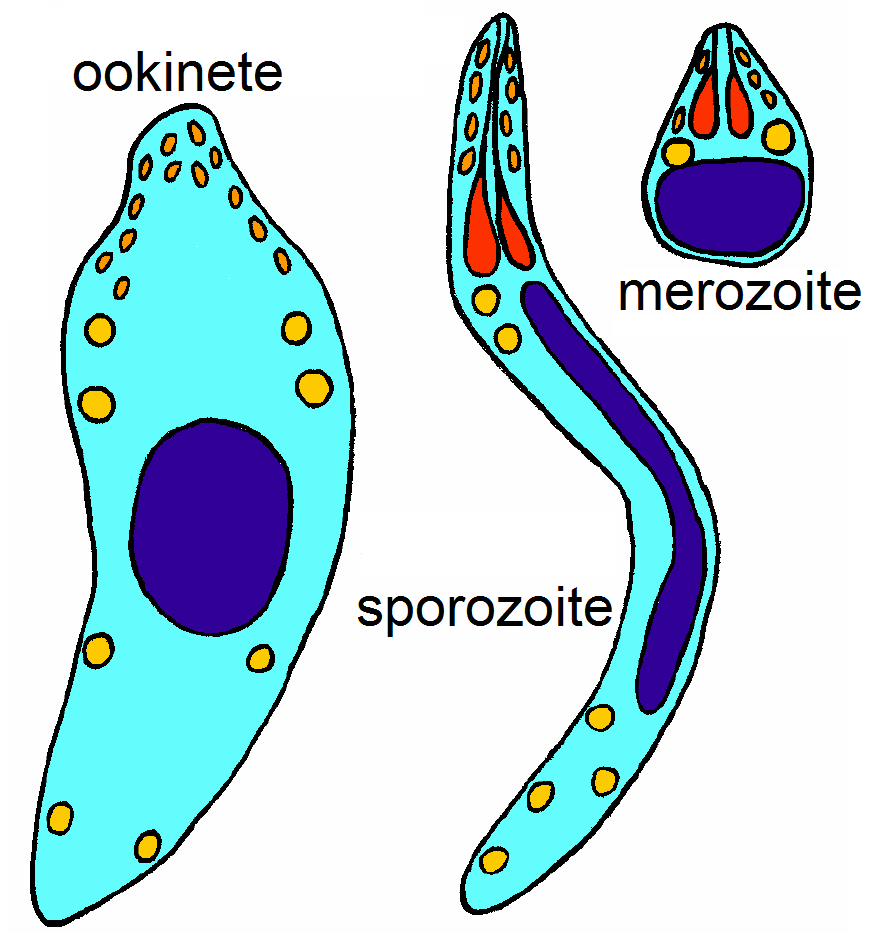|
Pfeifferinella
''Pfeifferinella'' is a genus of parasitic alveolates in the phylum Apicomplexa. This genus has been poorly studied and little is known about it. Species in this genus infect marine priapulid worms and terrestrial and freshwater gastropods. History This genus was created by Wasielewski in 1904.Wasielewski T (1904) Studien und Mikrophotogramme zur Kenntnis der Pathogenen Protozoen. Johann Ambrosius Barth, Leipzig Taxonomy The type species is ''Pfeifferinella ellipsoides''. Six species are currently recognised in this genus. Description The majority of species have developmental stages undergo merogony, gamogony and sporogony within the digestive gland of gastropod host. The oocysts are passed in the faeces. The oocysts lack sporocysts. Each oocyst have 8-14 free sporozoites. A large oocyst residuum is present. The micropyle Micropyle may refer to: * Micropyle (botany) a minute opening in the integument of an ovule of a seed plant. * Micropyle (zoology) A micropyle is a p ... [...More Info...] [...Related Items...] OR: [Wikipedia] [Google] [Baidu] |
Eucoccidiorida
The Eucoccidiorida are an order of microscopic, spore-forming, single-celled parasites belonging to the apicomplexan class Conoidasida. Protozoans of this order include parasites of humans, and both domesticated and wild animals including birds. Among these parasites are the ''Toxoplasma gondii'' that cause toxoplasmosis and ''Isospora belli'', which results in isosporiasis. Definition This is the largest order in the class Conoidasida and contains those species that all undergo merogony (asexual), gametogony (sexual) and sporogony (spore formation) during their lifecycles. Genera Nineteen families, three subfamilies, and 70 genera are recognised in this order. The genera include: '' Adelea'', ''Adelina'', ''Aggregata'', '' Alveocystis'', '' Atoxoplasma'', '' Babesiosoma'', ''Barrouxia'', '' Bartazoon'', '' Besnoitia'', '' Calyptospora'', '' Caryospora'', '' Caryotropha'', '' Chagasella'', '' Choleoeimeria'', ''Cryptosporidium'', '' Crystallospora'', '' Cyclospora'', '' Cyrilia ... [...More Info...] [...Related Items...] OR: [Wikipedia] [Google] [Baidu] |
Eimeriorina
Eimeriorina is a suborder of phylum Apicomplexa. All species in this clade are homoxenous or facultatively homoxenous. Merogony, gamogony and oocyst formation all occur within the same host. The hosts may be vertebrates or invertebrates. Erroneous identifications of species is a major problem in coccidian systematics and it is likely that some of the genera and species will be revised. Taxonomy There are 12 families, 2 subfamilies and 50 genera recognised in this suborder. The genus ''Eimeria'' with ~1500 species is the largest genus in this suborder. Notes One genus is entirely entomoxenous (parasitic on insects) — ''Barrouxia ''Barrouxia'' is a genus of parasitic alveolates belonging to the phylum Apicomplexa. This genus was created by Schneider in 1885.Levine ND (1983) The genera ''Barrouxia'', ''Defretinella'', and ''Goussia'' of the coccidian family Barrouxiidae ( ...''. The taxonomic status of '' Atoxoplasma'' remains unclear. References Conoidasida SAR ... [...More Info...] [...Related Items...] OR: [Wikipedia] [Google] [Baidu] |
Eimeriidae
Eimeriidae is a family of Apicomplexa. It contains the following genera: *'' Acroeimeria'' Paperna & Landsberg, 1989 *'' Alveocystis'' Bel'tenev, 1980 *'' Caryospora'' Léger, 1904 *''Cyclospora'' Schneider, 1881 *''Diaspora'' Léger, 1898 *''Dorisa'' Levine, 1979 *''Eimeria'' Schneider, 1875 *''Epieimeria'' Dyková & Lom, 1981 *''Gousseffia'' Levine & Ivens, 1979 *'' Hoarella'' Arcay de Peraza, 1963 *''Isospora'' Schneider, 1881 *'' Mantonella'' Vincent, 1936 *'' Octosporella'' Ray & Ragavachari, 1942 *'' Pfeifferinella'' von Wasielewski, 1904 *'' Polysporella'' McQuistion, 1990 *'' Pythonella'' Ray & Das Gupta, 1937 *'' Sivatoshella'' Ray & Sarkar, 1968 Taxonomy The family ''Goussia'' forms a trichotomy with the ''Eimeriidae'' and ''Sarcocystidae''. The biliary Eimeria-like coccidia of reptiles are classified into the genus ''Choleoeimeria ''Choleoeimeria'' is a genus of alveolate parasites that infect the biliary tracts of reptiles. Morphologically they are similar to the ... [...More Info...] [...Related Items...] OR: [Wikipedia] [Google] [Baidu] |
Priapulid
Priapulida (priapulid worms, from Gr. πριάπος, ''priāpos'' 'Priapus' + Lat. ''-ul-'', diminutive), sometimes referred to as penis worms, is a phylum of unsegmented marine worms. The name of the phylum relates to the Greek god of fertility, because their general shape and their extensible spiny introvert (eversible) proboscis may resemble the shape of a human penis. They live in the mud and in comparatively shallow waters up to deep. Some species show a remarkable tolerance for hydrogen sulfide and anoxia. They can be quite abundant in some areas. In an Alaskan bay as many as 85 adult individuals of ''Priapulus caudatus'' per square meter has been recorded, while the density of its larvae can be as high as 58,000 per square meter. Together with Echiura and Sipuncula, they were once placed in the taxon Gephyrea, but consistent morphological and molecular evidence supports their belonging to Ecdysozoa, which also includes arthropods and nematodes. Fossil findings show th ... [...More Info...] [...Related Items...] OR: [Wikipedia] [Google] [Baidu] |
Sporozoite
Apicomplexans, a group of intracellular parasites, have life cycle stages that allow them to survive the wide variety of environments they are exposed to during their complex life cycle. Each stage in the life cycle of an apicomplexan organism is typified by a ''cellular variety'' with a distinct morphology and biochemistry. Not all apicomplexa develop all the following cellular varieties and division methods. This presentation is intended as an outline of a hypothetical generalised apicomplexan organism. Methods of asexual replication Apicomplexans (sporozoans) replicate via ways of multiple fission (also known as schizogony). These ways include , and , although the latter is sometimes referred to as schizogony, despite its general meaning. Merogony is an asexually reproductive process of apicomplexa. After infecting a host cell, a trophozoite ( see glossary below) increases in size while repeatedly replicating its nucleus and other organelles. During this process, the orga ... [...More Info...] [...Related Items...] OR: [Wikipedia] [Google] [Baidu] |
Oocyst
Apicomplexans, a group of intracellular parasites, have life cycle stages that allow them to survive the wide variety of environments they are exposed to during their complex life cycle. Each stage in the life cycle of an apicomplexan organism is typified by a ''cellular variety'' with a distinct morphology and biochemistry. Not all apicomplexa develop all the following cellular varieties and division methods. This presentation is intended as an outline of a hypothetical generalised apicomplexan organism. Methods of asexual replication Apicomplexans (sporozoans) replicate via ways of multiple fission (also known as schizogony). These ways include , and , although the latter is sometimes referred to as schizogony, despite its general meaning. Merogony is an asexually reproductive process of apicomplexa. After infecting a host cell, a trophozoite ( see glossary below) increases in size while repeatedly replicating its nucleus and other organelles. During this process, ... [...More Info...] [...Related Items...] OR: [Wikipedia] [Google] [Baidu] |

